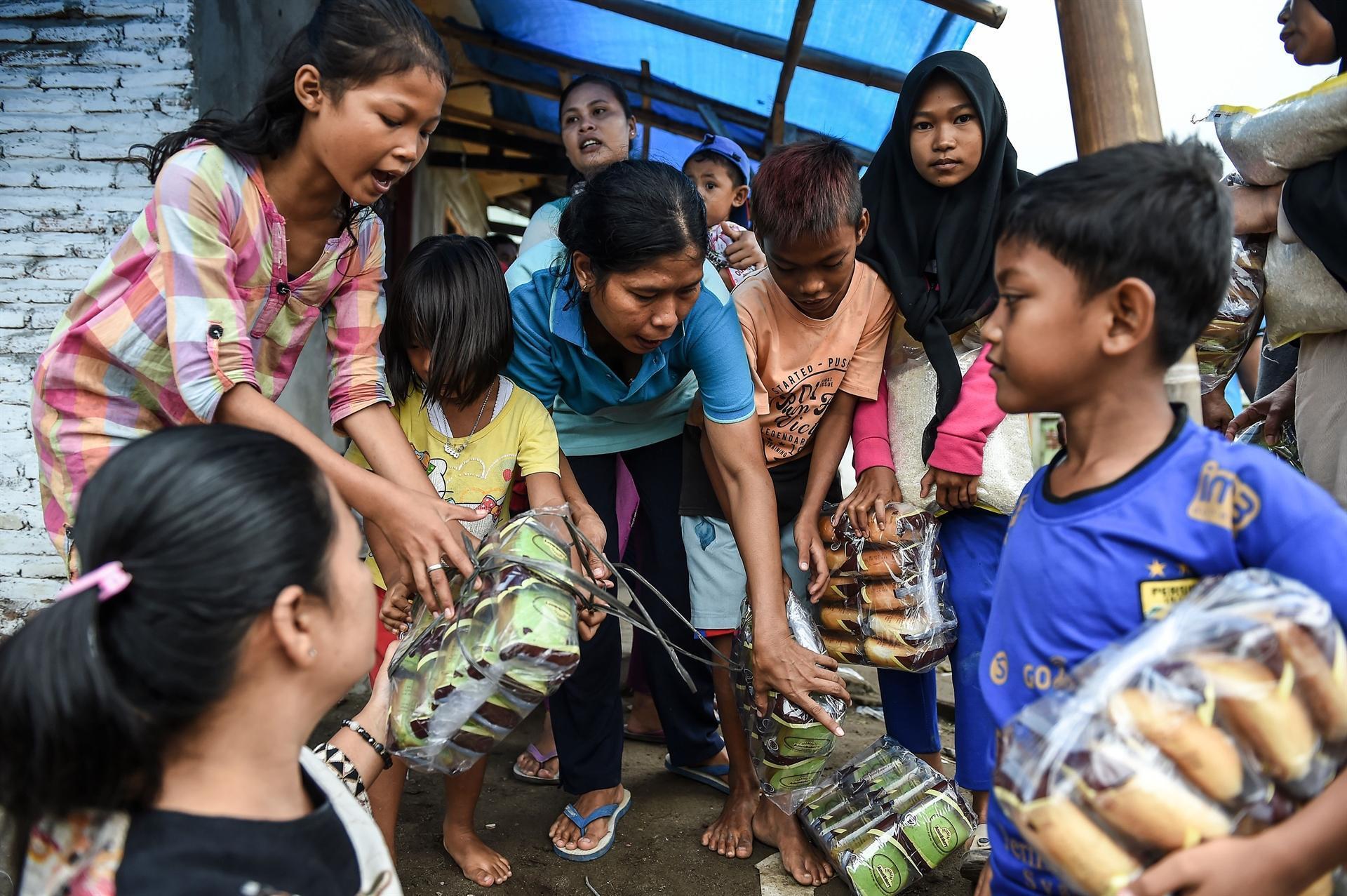
Desperately-needed aid flowed into a stretch of Indonesia’s tsunami-struck coastline Tuesday, but humanitarian workers warned that clean water and medicine supplies were dwindling as thousands crammed makeshift evacuation centres.
Fears about a public health crisis come as the death toll from Saturday’s volcano-triggered disaster topped 400 with thousands more displaced -- many left homeless after houses were flattened by the killer wave.
"A lot of the children are sick with fevers, headaches and they haven’t had enough water," said Rizal Alimin, a doctor working for NGO Aksi Cepat Tanggap, at a local school that was turned into a temporary shelter.
"We have less medicine than usual ... It’s not healthy here for evacuees. There isn’t enough clean water. They need food and people are sleeping on the floor."
The powerful tsunami struck at night and without warning, sweeping over popular beaches on southern Sumatra and the western edge of Java and inundating tourist hotels and coastal settlements.
The latest death toll stood at 429, with 1,485 people injured and another 154 missing.
Experts have warned that more deadly waves could slam the stricken region now covered by mountains of overturned cars, boats, furniture and other debris.
Many evacuees are too afraid to return home, fearing another tsunami.
"I’ve been here three days," said Neng Sumarni, 40, who was sleeping with her three children and husband on the school’s floor with some three dozen others.
"I’m scared because my home is right near the beach."
Authorities are using sniffer dogs to try to find any survivors and victims’ bodies, while they have turned to drones to survey the devastated coastlines.
"We are still searching for victims who might still be buried under the rubble," said Ketut Sukarta, head of the disaster agency in South Lampung on Sumatra.
Abu Salim, with volunteer disaster aid group Tagana, said aid workers were scrambling to stabilise the situation.
"Today we’re focusing on helping the evacuees in shelters by setting up public kitchens and distributing logistics and more tents in suitable places," he told AFP on Tuesday.
"(People) still don’t have access to running water ... There are many evacuees who fled to higher ground and we still can’t reach them."
Aid was flowing in mainly by road while two government boats were on their way to several islands near the Sumatran coast to help dozens of marooned residents.
In shattered Way Muli village on Sumatra, Udin Ahok was coming to grips with the horrible choice he was forced to make: save his wife or his mother and baby.
When the tsunami slammed into his house, the panicked Ahok fought to reach his sleeping 70-year-old mother and one-year-old son but then he saw his wife about to drown in the swirling waters. He plucked her to safety.
His mother and baby were found dead under mountains of debris.
"I didn’t have time to save my mother and son," the weeping 46-year-old told AFP from a shelter in one of the stricken region’s hardest-hit areas.
"I regret it so much. I can only hope they’ve been given a place in God’s hands."
Across the Sunda Strait in Java island, Saki stood amid the rubble of what was once Sumber Jaya village and wondered aloud how he would get his life back on track.
"I can’t rebuild, everything is gone -- my clothes, my money," said the 60-year-old, who like many Indonesians goes by one name.
Officials say the evidence suggested that an eruption of the rumbling Anak Krakatoa volcano, which sits in the middle of the Strait, caused a section of the crater to collapse and slide into the ocean, triggering the tsunami.
Anak Krakatoa is an island that emerged around 1928 in the crater left by Krakatoa, whose massive 1883 eruption killed at least 36,000 people.
Unlike those caused by earthquakes, which usually trigger alert systems, volcano-triggered tsunamis give authorities very little time to warn residents of the impending threat.
Indonesia’s disaster agency initially said there was no tsunami threat at all, even as the killer wave crashed ashore.
It was later forced to issue a correction and an apology as it pointed to a lack of early warning systems for the high death toll.
Disaster agency spokesman Sutopo Purwo Nugroho said on Monday: "The lack of a tsunami early warning system caused a lot of victims because people did not have the time to evacuate."
The tsunami was Indonesia’s third major natural disaster in six months, following a series of powerful earthquakes on the island of Lombok in July and August and a quake-tsunami in September that killed around 2,200 people in Palu on Sulawesi island, with thousands more missing and presumed dead.
It also came less than a week before the 14th anniversary of the 2004 Boxing Day tsunami, one of the deadliest disasters in history that killed some 220,000 people in countries around the Indian Ocean, including some 168,000 Indonesians.
The vast archipelago nation is one of the most disaster-hit nations on Earth due to its position straddling the so-called Pacific Ring of Fire, where tectonic plates collide.